Amy Tan is an American author known for her fiction writing about mother-daughter relationships and Chinese culture. Her books The Joy Luck Club & The Bonesetter’s Daughter are among her best-known works.
With a career spanning over 30 years, it goes without saying that Tan knows how to use her memories and imagination to create compelling fiction.
But just how good is Amy Tan’s MasterClass? And can it really help you to write your own fiction?
These are the points I’ll address in this Amy Tan MasterClass review.
.
Quick summary
You’ll learn:
- Tan’s creative processes
- How to channel real life into your work
- The best ways to use “imagination”
- Tan’s tips for strong research
- The pros and cons of different narrative styles
- Ways to overcome writer’s block
- How to deal with rejection
- Techniques for working in different mediums
Pros
- Learn from an established author
- Strong examples used throughout
- Ideal for beginner writers
Cons
- Less career-driven advice
- No workshop sessions
Length of course: 3 hours, 12 minutes, spread over 14 video lessons
Best for: those starting their journey in writing and hoping to improve and find their style. Ideal for those who are new to fiction writing and looking to develop their voice.
Overall: a fun and informative course teaching you how to craft great stories while avoiding common pitfalls. Tan shows you how her personal life and imagination have informed her writing, and also shares some useful exercises for you to try. The class is framed in a 1-1 style, with Tan sharing her personal writing philosophies.
Here’s what’s in store for this Amy Tan MasterClass review:
- About Amy Tan and MasterClass
- A sneak peek at what’s inside
- Pros and cons
- Who it’s for
- How much it costs
- Is there anything better?
- What others thought of the course
- How unique the content is
- Final verdict: is it worth it?
Let’s get started:
About Amy Tan
If you’re here, you likely have some idea of who Amy Tan is and what she’s known for. So, I’ll spare you the biography and sum up a few key career points:
- Working in freelance writing, Tan secured her first publishing deal back in 1987
- Her 1989 novel, The Joy Luck Club, spent over 70 weeks on the New York Times bestseller list
- Further to her books, her work has been adapted into stage plays, operas, feature films and animation!
If you haven’t seen the Amy Tan MasterClass trailer yet, it’s worth checking out here:
About Masterclass
MasterClass is an e-learning platform founded in 2015. Since its beginning, it’s slowly risen to the top of the online learning scene with its high production values and in-depth courses. To date, it boasts 100+ classes.
Its unique selling point is its celebrity-level teaching — so you can be assured you’re learning from the best.
Courses include Donna Farhi teaching Yoga Foundations, Daniel Pink teaching Sales and Persuasion, and Matthew Walker teaching The Science of Better Sleep — to name a few.
That being said, and having taken many MasterClasses myself, I can say that it’s not for everyone. So, in this review, I’ll weigh up the pros and cons to help you decide whether Amy Tan’s MasterClass is a fit for you.
An inside look into Amy Tan’s MasterClass
Amy Tan’s MasterClass is 3 hours, 12 minutes long, and has 14 lessons.
The class includes a 28-page Workbook with chapter reviews, required reading, and more.
In this course, you join Tan in her home study as she guides you through her creative process. You’ll also get a glimpse at how she uses other creative outlets to inform her writing, and how she approaches research, imagination and structure.
To give you a better idea of what you’ll get from this MasterClass, here are my chapter breakdowns:
Lessons 1-2: Meet Your Instructor & Finding Your Writing Voice
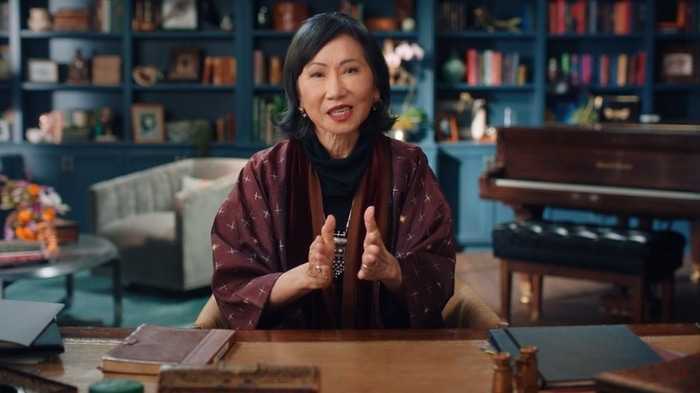
“If you want to be a good writer, read a lot of good books”
In her opening section, Tan sets out what she’d like you to gain from her MasterClass. This includes her lesson aims as well as laying down her own writing journey.
As she sees it, fiction-writing is open to all but takes a lot of dedication. With this in mind, Tan shares her tips for time management and writing in your free time.
So, this lesson teaches you how to:
- Find the starting point for your writing
- Shape your voice to suit your story
- Use perspective to make your work unique
- Keep an open mind when writing
In this chapter, Tan teaches you the different types of “voices” you can use in your writing and how this can inform your story.
For me, a great part of this chapter was hearing Tan’s thought processes on how she used her traumatic past as a guide for her work. Using her relationship with her mother as a reference point, she talks you through how this inspired The Joy Luck Club.
So, by the end of the lesson, you’ll gain insight into how to use your “beginner’s mind” to your advantage and tap into your past to craft believable fiction.
Lesson 3: Memory, Truth and Imagination
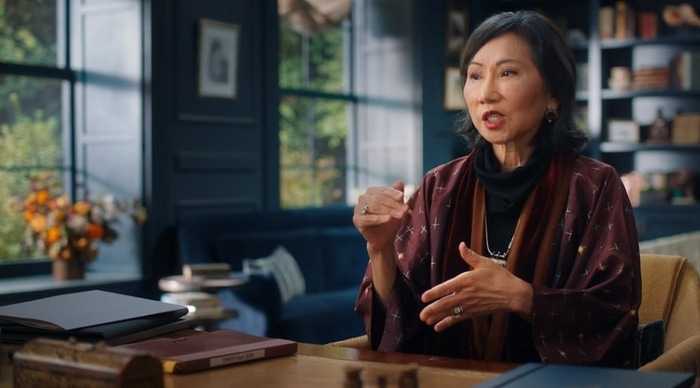
“The power of fiction is to find the truth of what something really feels like”
In this lesson, Tan gives you some tidbits on how to use memories in your writing and understand their context.
With this in mind, you’ll learn:
- The relationship between truth and idealism
- How to avoid sounding contrived
- The best way to make your scenes authentic
- Tan’s “Courtroom” theory and how to use it
Taking you through some of her real experiences, Tan shares how she used and expanded upon memories in her writing. While doing so, she also gives you advice on how to approach character-creation.
By the end of this lesson, you’ll have a better idea of how to use and maintain context in your story, as well as the relationship between what Tan sees as “truth” and “intention”.
Like her last lesson, this class also ends with a practical exercise on memory and imagination.
From here, Tan takes you on to:
Lesson 4: Research and Observation
“I love research, I think most writers do”
In this chapter, Tan takes you through some of her tips and tricks for research. Having researched various periods and locations for her work, Tan shares her top tips for getting the most out of your research.
You’ll learn:
- Tan’s special technique for photo research
- Strategies for time management
- The pros and cons of different research types
- How to use journals for your research
- Tips to avoid plagiarism
As Tan sees it, you can do too much research. So, with this in mind, she teaches you how to gain what you need without cutting into your writing time. This is especially useful when working to a deadline!

Taking you through her own examples, Tan details how photographs and journaling assist her in her research. She also encourages you to “channel your disorganisation” — and expands on what she means by this.
You’ll also learn how to make the most of creative forms to inspire and expand upon your work.
This takes you on to:
Lesson 5: Beginning Your Story
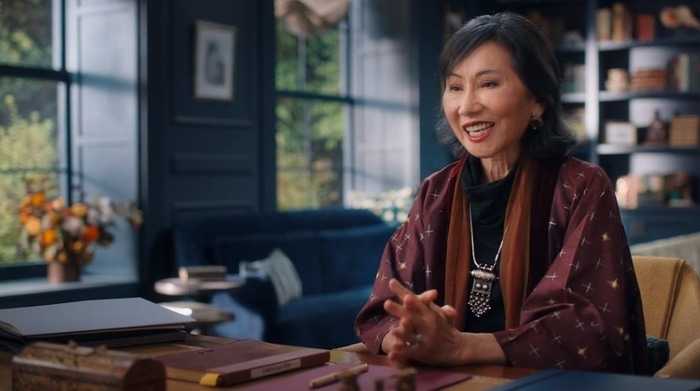
“You have to choose the right beginning”
In this chapter, Tan encourages you to keep an open mind with your beginning. Focusing on The Joy Luck Club (and the required reading in your Workbook), Tan guides you through what she sees as a strong opening and why.
So, in this lesson, Tan teaches you:
- How to recognize a strong opening
- Why outlining can improve your writing
- How to grab a publisher’s attention
- Tips for making your opening clear
- Ways to transition from short story to novel
Along with sharing her personal philosophies about what makes a good/bad opening, Tan also teaches you how to avoid common mistakes most beginner writers make.
Giving you insight into how to use and edit an outline for your story, you’ll learn how to “fix” your characters and set your story up effectively. You’ll also learn how to make your opening unique by using your individual voice.
While the MasterClass remains relatively spoiler-free, it’s worth noting that this lesson does contain The Joy Luck Club’s opening and further examples from Tan’s required reading.
Lessons 6-7: Narrative Point of View & Character Development
“The truth is every character has a bit of me”
In these lessons, Tan focuses on how to use different narrative frameworks to tell your story. She also gives you her philosophy on how to make characters more believable.
So, with this in mind, you’ll learn:
- The pros and cons of narrative points of view
- How narrative perspective can change your story
- How to use “universal truth” in your writing
- Tan’s #1 piece of advice for character-writing
The way Tan sees it, every point of view has its pros and cons. Using on-screen examples, Tan shows you how a single story can be told in many different ways.
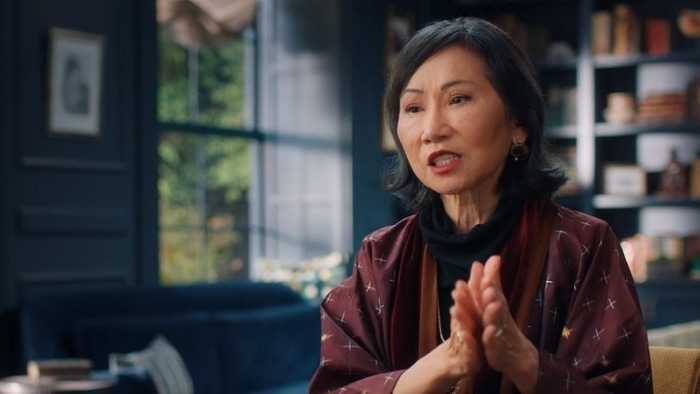
This takes you right on to:
Lesson 8: Choosing the Right Words
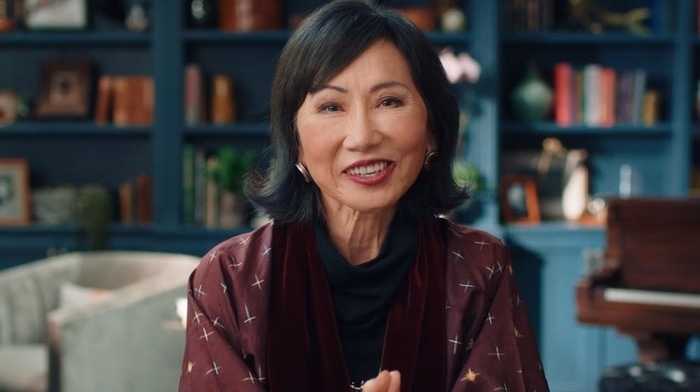
“You can never have exactitude”
As Tan sees it, it’s essential to be deliberate with your word choice. And, if you use words correctly, they can greatly enhance your story.
So, in this lesson, you’ll learn:
- How to make words relate to one another
- Tan’s theory of word “textures”
- Tips for writing with rhythm
- How to find words that convey tone
In this lesson, Tan gives you some concrete examples of what to use and avoid when it comes to word choice. She also talks about her theory of “fresh language” and how this has made her work successful.
Tan spends a fair amount of this lesson giving you actionable advice on crafting dialogue. Like in other lessons, she also advises you on how to avoid common pitfalls that most writers fall victim to.
Lesson 9: The Revision Process
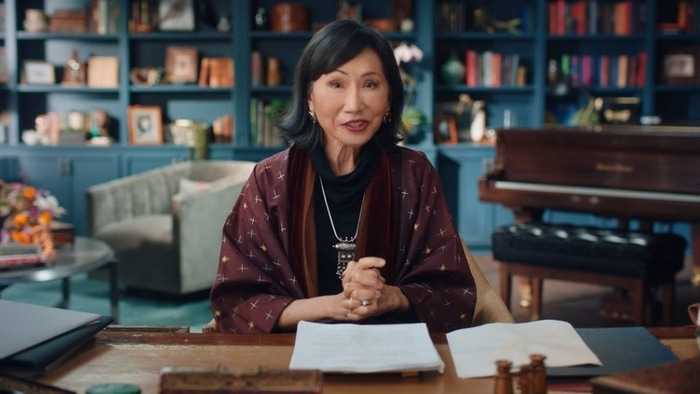
“No book is ever perfect. I think that. Most writers I know think that”
Here, Tan talks you through her revision process. She’s a firm believer that can do plenty to improve your work before you show it to an editor. In fact, she even shares her tidbits on how to be “your own best editor”
With this in mind, you will learn:
- Tan’s elements of revision
- Key revision questions to ask yourself
- How to spot a “static environment” in your work
- Ways to develop relationships with other writers
- Tan’s advice on making cuts
As Tan sees it, it’s good to have a second opinion on what is/isn’t working in your book. With a focus on using revision as a chance to re-evaluate , she also takes you through many cuts she made to her own work.
For me, a key takeaway was seeing how much of Tan’s own work she had to cut. If you’re just starting out in writing, this is hugely encouraging and reminds you to stay open-minded about changing parts of your book.
Lessons 10-11: Writing Companions & Writer’s Block
“I don’t know anybody it hasn’t happened to”
In these lessons, you’ll gain insight into Tan's creative process while she’s writing. She also shares several actionable tips on how to overcome writer’s block.
So, in this section, you’ll learn:
- Tan’s 3 “companions” and how they help her
- Different types/causes of writer’s block
- How best to avoid distraction when writing
In this lesson, Tan gives you some practical advice on combating writer’s block. Breaking down each type of block, she advises you on how you can identify the problem to become unstuck.
This lesson ends with a practical exercise, which then leads straight to:
Lessons 12-13: Behind the Scenes: The Joy Luck Club Movie & Amy’s Rejection Letters
“Writing the screenplay of your book can be both exhilarating and terrifying”
In these chapters, Tan talks you through the conversion process from book to screenplay with The Joy Luck Club in 1993. She also gives an open and honest account of her works’ rejections, and how to respond to these.

So, here, you’ll learn how to:
- Effectively translate from book to screen
- Keep the “soul” of your book in a new medium
- Develop relationships with screenwriters and directors
- Put rejection and criticism into a bigger perspective
In this lesson, Tan talks openly about her doubts about The Joy Luck Club becoming a movie. You’ll hear how she sees the adaptation differently and how you can even use film to enhance your story.
At the end of this chapter, Tan reads some of her works’ rejection letters. One highlight of this lesson is how open she is about these low moments. She even gives you advice on how to interpret/respond to criticism.
Lastly, this takes you on to:
Lesson 14: How to End Your Story
“You know it probably is the end because it has meaning”
In her final lesson, Tan gives you her insights into how to end a book and use this process as a point of reflection. With a focus on avoiding the predictable, Tan gives some examples of endings she thinks work effectively.
With this in mind, Tan teaches you:
- How to provide clarity at the end of your story
- The difference between endings in books vs. movies
- What to avoid in your ending
- How to get into the ending “mindset”
- The parallels of endings and new beginnings
In this lesson, Tan challenges you to put yourself in the mind of your reader. She also prompts some key questions you need to ask about your ending. As she sees it, the ending can inspire a new process of discovery and lead to making further changes earlier on in the story.
In her parting words, Tan gives her advice on how to “feel” the ending and leaves you with her final — and most important — tips for new writers.
What I liked about Amy Tan’s MasterClass
Learn from an established author
With over a dozen books to her name and a career spanning 30+ years, Tan clearly knows what she’s talking about when it comes to writing.
In this course, you get the chance to learn from Tan directly as she shares her writing experiences. You’ll also learn Tan’s techniques for crafting a story by using memories and creativity.
Strong examples used throughout
While a lot of Tan’s advice is subjective, she backs up all of her points with concrete examples. For me, this made the course a lot more balanced and varied. If you learn best by example, too, this is a great highlight of the class. Tan almost always brings her points home by showing how it relates to either her own or others’ writing.
Along with the Workbook, this really helps to emphasize Tan’s teachings. Another bonus of the course is that often Tan’s examples are shown on screen, making it even easier to understand
Ideal for beginners
Much of Tan’s advice in her MasterClass is aimed towards beginners. This makes this course ideal for those who are new to fiction-writing and would like a solid foundation to build upon.
However, that’s not to say that more seasoned writers wouldn’t benefit from Tan’s MasterClass. In fact, her advice on memory and imagination could apply to anyone who wants to use these features in their writing.
What I think could be improved
Less career-driven advice
One downside of this course is that it’s largely focused on those starting out in their writing. Because of this, there’s less attention to career advice. When Tan talks about working with agents, editors, etc., this is mostly done in passing.
In her section on rejection letters, Tan does emphasize how crucial the role of the agent/editor is. But, she doesn’t tell us how she made these connections or how you can make these connections yourself.
The good news is that with MasterClass you also get access to other courses like David Baldacci’s and James Patterson’s. These are a lot more career-focused and will help you gain a more rounded learning experience!
No workshop sessions
Unlike some other MasterClasses, Tan’s course is entirely “1-1”. While this won’t be a problem for some, and makes sense considering it’s a beginner-level course, it would have been nice to see some more varied video content.
That being said, Tan’s writing exercises help to keep you actively involved in your learning. While these don’t appear in every lesson, they’re a nice way of taking the classes further. The Workbook, too, does a great job of expanding on these exercises.
Also, there are other MasterClass courses, such as Roxane Gay’s and Aaron Sorkin’s, that make good use of workshop-style lessons. This is a great way to get varied points of view on writing.
Who’s this course for?
In my view, this course is best suited to anyone who’s:
- A fan of Tan’s and her approach to writing
- Starting out in their fiction-writing journey
- Wants to improve their writing style
- Keen to tell stories based on their own experiences
While beginner writers will likely get the most out of this course, I do think Tan’s advice is helpful for anyone looking to improve their fiction-writing skills and to use real life events to inform their stories.
Tan’s focus is on starting out — so if you’ve been writing for a while and want improvement techniques, or perhaps a more career focused course, then another MasterClass (such as David Baldacci’s) might be a better option.
So, if any of the above bullets sound like you, I think this MasterClass would be a great fit.
How much does the course cost?
MasterClass pricing might’ve changed since this review, so for the latest info click here.
Currently, MasterClass has 3 subscription offers. The price for these (per month) are:
- Individual (1 user): $10
- Duo (2 users): $15
- Family (6 users): $20
All are billed annually, which may seem a little pricey at first glance.
That being said, the value for money comes from taking as many courses as possible.
With 200+ courses on MasterClass, you’re bound to find many that interest you. But, even if you find that only 10% of the courses interest you, this still works out at $6 per course.
And, if you join with friends or family, the cost for each course is drastically reduced. Check out our MasterClass review or MasterClass cost articles to see how.
Bearing in mind that these courses are taught by leading experts, the value for money is unbeatable. Elsewhere, you can pay over $100 for a course taught by someone you’ve never heard of, and it would nowhere near match the caliber of teaching on MasterClass.
Besides, MasterClass offers a 30-day refund policy if you’re not happy with your purchase.
You can also purchase MasterClass as a gift.
Alternatives to Amy Tan’s MasterClass
Aside from Tan’s Course there are plenty of writing courses both on and outside of MasterClass. At the time of writing, MasterClass offers:
- James Patterson — Writing
- Amanda Gorman — Poetry
- Aaron Sorkin — Screenwriting
- Shonda Rhimes — Writing for Television
- David Mamet — Dramatic Writing
- Judy Blume — Writing
- R.L. Stine — Writing for Young Audiences
- Malcolm Gladwell — Writing
- Margaret Atwood — Creative Writing
- Dan Brown — Writing Thrillers
- Neil Gaiman — The Art of Storytelling
- Billy Collins — Reading and Writing Poetry
- David Baldacci — Mystery and Thriller Writing
- Joyce Carol Oates — The Art of the Short Story
- David Sedaris — Storytelling and Humour
- Walter Mosley — Fiction and Storytelling
- Salman Rushdie — Storytelling and Writing
- Roxanne Gay — Writing for Social Change
Outside of MasterClass, the closest I could find to Tan’s course was Udemy’s Fiction, Memoir and Novel Writing course. But, while this is cheaper and longer than Tan’s course, I feel like you aren't getting the expert-level instruction or high production values that MasterClass offers.
The verdict?
If you’re more interested in honing your skills as a writer, rather than developing your approach to fiction, a more career-focused course might be more for you.
But, if you’re a fan of Tan’s and/or are eager to change how you see and work with memory in fiction, I think her MasterClass is invaluable. You also have the bonus of hearing from a best-selling author.
So, it’s worth considering what you want to get out of this MasterClass before committing to it.
And, remember, with the all-access pass, you can take any or all of the MasterClass courses!
Amy Tan’s Master Class: what others have said
My aim here is to present the most fair and balanced review of Amy Tan’s MasterClass. So, it’s worth drawing attention to both good and bad reviews.
While researching the course on Reddit and similar forums, I found largely positive reviews. That being said, the course wasn’t without its flaws. However, these were mostly technical issues rather than criticisms of Tan herself:
“Is anyone else having issues downloading the associated PDF? I can’t get it via the website or the app. The link doesn’t seem to go anywhere.” -- Comment from MasterClass.
That being said, MasterClass does have an active team on-site who resolve these issues fairly promptly. Overall, though, Tan’s class was well-received and offered a unique perspective on how to use memories in fiction:
“I didn't know who Amy Tan is but I looked at the trailer and started taking the course. Wow! She’s awesome, describing how we can pick times and memories from our own lives to build stories. I’m super excited about watching/listening to the whole class” -- Comment from MasterClass.
“I’m working on a novel length story and find good technical ideas from great writers. I am relieved to hear Amy Tan speak about self-doubt because it’s a prominent challenge for me.” -- Comment from MasterClass.
“Amy’s tips on how everyone goes through [writer’s block] was liberating. When she said that you can have too many things in your head, I felt that. You may have written yourself into a corner.” -- Comment from MasterClass.
How long it took to complete the course
At 3 hours and 12 minutes long, Amy Tan’s MasterClass is of an average length. Her lessons vary between 6 and 25 minutes long, and you can easily group lessons together to spread them out over a week.
Is the course content unique?
In short, this course isn’t 100% unique. As a published author of fiction and non-fiction, Tan has shared many of her writing philosophies in the past.
That being said, this was the first time I’d seen Tan teach a video-based course. It definitely felt more intimate than, say, her interviews, where she’s usually promoting her books rather than sharing techniques.
There’s also a huge benefit to seeing Tan guide you through her approach to writing (backed up by on screen examples). For visual and practical learners, this really helps bring the lessons to life.
And, with MasterClass, you have the bonus of all content being in one easy-to-access place. This includes the Workbook resources and a community forum.
What you’ll need
While you don’t need any equipment to complete this course, it’s worth having some sort of note-taking device to get the most from this class. This also helps you to engage with the exercises Tan sets at the end of her lessons.
Is Amy Tan’s MasterClass worth it?
If you know a little bit about Tan and the themes she uses in her stories, you’ll likely enjoy this course.
I would say this course is suited to anyone looking to use memories and imagination to inform their writing. Whether you’re a fan of Tan’s or not, this class excels at encouraging you to write from a personal perspective when crafting fiction.
While the class has some great tips for more experienced writers, it’s definitely more focused on those starting out. So, if you liked what you saw in the trailer and lesson plan, you should come away feeling inspired!
And, to get the most out of MasterClass, it’s worth taking as many courses as possible that interest you. With 100+ classes to choose from, this should be easy.
For example, you can learn Interior Design from Kelly Wearstler, Cooking from Gordon Ramsay, and The Art of Negotiation from Chris Voss.
When it comes to writing, MasterClass currently boasts 15+ classes. So, if this is your area of interest, you’ll be spoiled for choice!
Also, MasterClass has a 30-day refund policy if you’re not happy with your purchase. This reduces your risk of losing money if a class isn’t for you.
Frequently asked questions
A MasterClass all-access-pass costs $120 a year ($10 a month). This gives you access to Amy Tan’s MasterClass, alongside 200+ other courses.
Amy Tan’s MasterClass is 3 hours and 12 minutes long and consists of 14 videos.
Unfortunately you cannot get the Amy Tan MasterClass for free. But MasterClass has a range of purchasing options and offers refunds if you’re not happy.
Yes, MasterClass operates a 30 day refund policy if you purchase directly through them. If you purchase through other providers, their returns policy may apply.

Rebecca graduated from King's College university with a first class honours in English Language, followed by a Masters' Degree in Eighteenth Century Studies.



An impressive share, I just given this onto a colleague who was doing a little analysis on this. And he in fact bought me breakfast because I found it for him.. smile. So let me reword that: Thnx for the treat! But yeah Thnkx for spending the time to discuss this, I feel strongly about it and love reading more on this topic. If possible, as you become expertise, would you mind updating your blog with more details? It is highly helpful for me. Big thumb up for this blog post!
Thank you so much! 😊 We’re glad you found the post helpful—and it’s awesome that it even got you breakfast! 😄 We truly appreciate your support and enthusiasm for the topic. We’ll definitely keep sharing more insights and updates, so stay tuned. Big thumbs up to you as well!